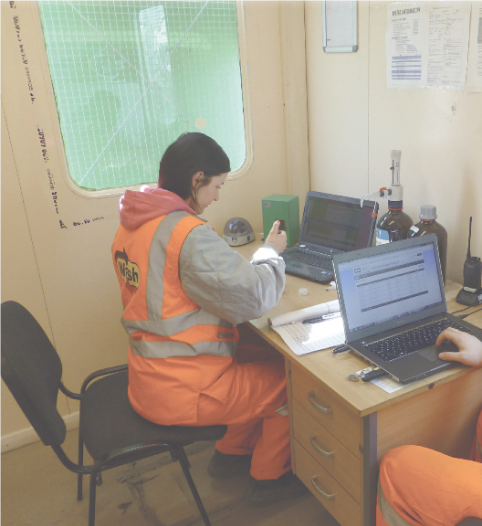
Until recently the only way to measure and identify Total Petroleum Hydrocarbons (TPHs) in soil, water and other environmental matrixes has been to use Gas Chromatography (GC), to separate out and quantify the hundreds of individual hydrocarbon compounds and then try to identify the TPH product type from the resulting chromatogram. GC requires skilled operators and a fully equipped laboratory but chromatograms from different laboratories or between different GCs cannot easily be compared, which reduces reproducibility and confidence. On-site methods have been used to measure TPH, but these are typically semi quantitative and cannot identify individual TPHs. With the development of UVFF (UV-Fluorescence Fingerprinting), reliable and accurate TPH identification and quantitative data is now possible while still retaining the significant benefits of rapid results, ease of use and flexibility of on-site analysis. This method is now accepted by environmental regulators worldwide, including the Environment Agency.
Under UV light, each TPH type fluoresces with a unique and consistent spectral fingerprint, even when the TPH type is substantially degraded. The instrument’s solid-state detector (similar to that used by NASA on the Mars Lander) measures this fluorescence across multiple wavelengths. UVFF is unique in that it resolves the raw sample data into as many as three individual hydrocarbon types, selected from a library of 20 reference materials including petrol, diesel, jet fuels, lubricating oils, coal tars and creosote. It does this automatically and consistently in just a few seconds. This method is sufficiently powerful to allow coal tar mixed into bitumen to be identified, and an estimate of the percentage of coal tar provided, useful when analysing road planings and cores. It then calculates the concentration of each of the TPH types identified using the corresponding matched library calibration curve. It also calculates the concentrations of BTEX, 16 PAHs, and Benzo(a)pyrene. The result is a table of values for TPH, BTEX, GRO, DRO, C5 – C10, C10 – C18, >C18, 16 EPA PAHs, BaP, total aromatics and, for some samples, phenolics. With a low part per billion sensitivity, most samples actually require dilution before analysis. This removes potential interference, but also allows measurement of concentrated or pure materials. Even when diluting the sample, the simplified sample preparation allows a sample throughput of 3 minutes per sample or 15 samples per hour, even for an unskilled operator.
From a practical point of view, this technology requires minimal operating skills and consumables, is robust and compact, running on just 5-12V DC. Operation is therefore possible from the back of a vehicle or on a remote site by using a small battery. It can also be used to complement laboratory GC-based methods by indicating if background natural organics are present, by identifying unexpected hydrocarbons such as coal tar and providing an initial TPH concentration. The GC can then be calibrated to the correct material and the sample suitably diluted. This removes the problems of carry over and calibration errors, minimising re-runs and damage to GC columns, significantly reducing costs.
This article was featured in the September/October issue of the AGS Magazine and was contributed by Peter Fleming, Analyser Specialist, QROS Ltd and Colin Green, Managing Director, QROS Ltd.